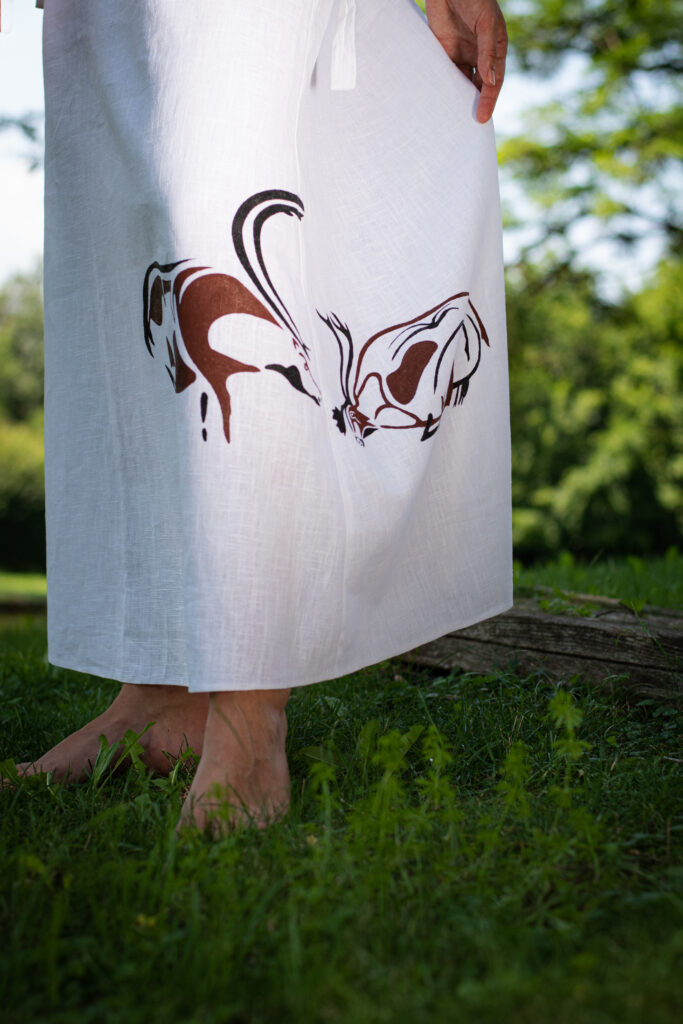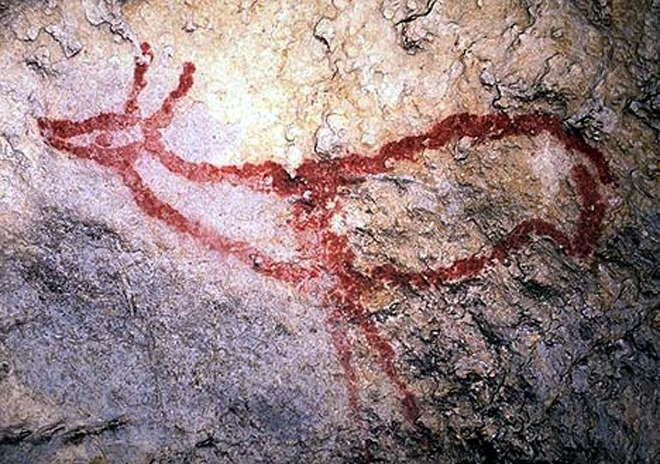
Just like with every great drama story, so is with ours. It begins somewhere. It was in 2012 when Denis, one of our team members, was working as the Art director in one of those “major art galleries”.
One day, while preparing for his weekly seminar on art history, he had an “epiphany”: “There must be something hidden, something more in these paintings, drawings, and other pictorial representations in caves and on rocks!”
In the back of his mind, Pablo Picasso’s famous words echoed constantly: “We have learned nothing in twelve thousand years,” spoken after his visit to the Lascaux Cave in France.
But what were these images? What do they truly represent? Who were the artists behind them? And where did their knowledge come from?
These are just a few of the questions sparked by these incredible, sometimes unimaginable drawings—artworks that would challenge even today’s most skilled professionals.
Paleolithic cave art is remarkable for its extraordinary aesthetics and the impressive level of artistic skill it demonstrates. The combination of realism and abstraction is truly striking. Paleolithic artists skillfully played with shadows and shades of color, utilized the natural contours of cave walls, and varied the sizes of figures to create a sense of depth, multidimensionality, and movement. The animals depicted appear almost alive.
As Denis delved deeper into the research, he realized we’ve been overlooking much of what our ancestors were trying to communicate. While some intriguing theories exist, many questions remain unanswered. This is why we believe that through sharing and education, modern Homo sapiens can uncover invaluable insights—if only we could fully decipher these images and the stories they tell.


“The prevailing official theory, which emerged in the early 1900s, claimed that Paleolithic paintings had a magic-religious purpose: by painting animals, their numbers would multiply. This concept of “hunting magic” was tied to “sympathetic magic,” where symbolic acts were believed to influence reality. This utilitarian approach was highly functional, linking art directly to the need for food.
But did this theory hold up? Analysis of Paleolithic diets, based on faunal bones found near rock art sites, showed a mismatch between the animals depicted and those consumed. For example, at Lascaux, 90% of the bones found were from reindeer, yet only one painting of a reindeer exists.
While researchers acknowledged that some aspects of the hunting magic theory had merit, it clearly didn’t explain everything. The theory was too simplistic given the complexity and diversity of the compositions, prompting the search for further explanations.”
(Quote from Bradshaw Foundation)
Professor Dr. Michael Rappenglück of Munich University believes that the scenes at Lascaux represent a map of the sky from 17,000 years ago. The seven points above the shoulder blades of a nearby bull are thought to represent the constellation Pleiades. Furthermore, the stars Aldebaran, the Pleiades, and the Hyades together form the constellation Taurus.
“If this bull had been discovered in a medieval manuscript rather than on a cave wall, it would have been immediately recognized as Taurus,” Rappenglück explained.
That being said, we can almost hear you asking, “But why the name neandARThal?”
As you probably know, it is widely accepted that the earliest undisputed art originated with Homo sapiens during the Aurignacian period, around 43,000 years ago. However, there are even older artworks that go beyond simple expressions of creativity—artworks that form the foundation of human development. According to historical evidence, these creations were likely made by Homo sapiens neanderthalensis.
It’s incredible to consider that Neanderthals may have been the true originators of art, such as the works found in caves like La Pasiega in Cantabria or Maltravieso in Cáceres, Extremadura, which have been dated to at least 64,000 BC.
Since they were the originators, the name neandARThal serves as a tribute to their creativity and legacy.

Of course, we added our own twist to the name by changing a letter—and honestly, we just like the way it sounds. Then again, why not?
Ok. We are getting long here. Lets stop the boredom of this unparalleled tale of dramatic introduction, but that’s how it all began. The only thing to know, that from there, like all good stories, we lived happily ever after. Or did we?
However, if you’d like to learn more, we warmly invite you to explore our “About the Art” section for a fuller picture.

